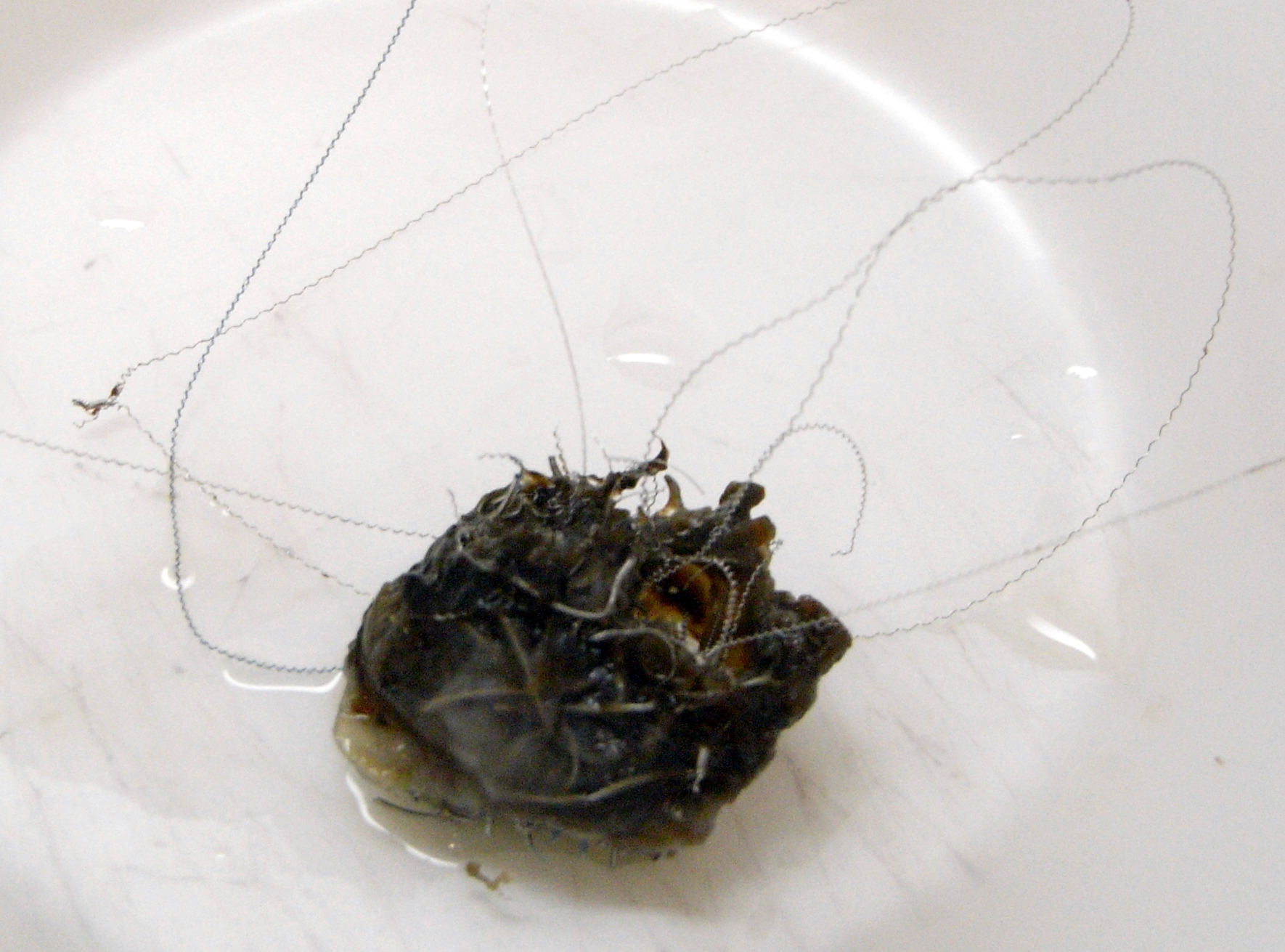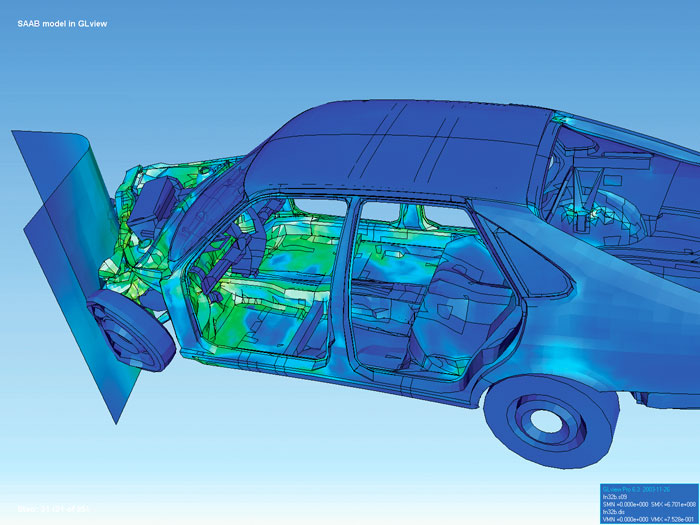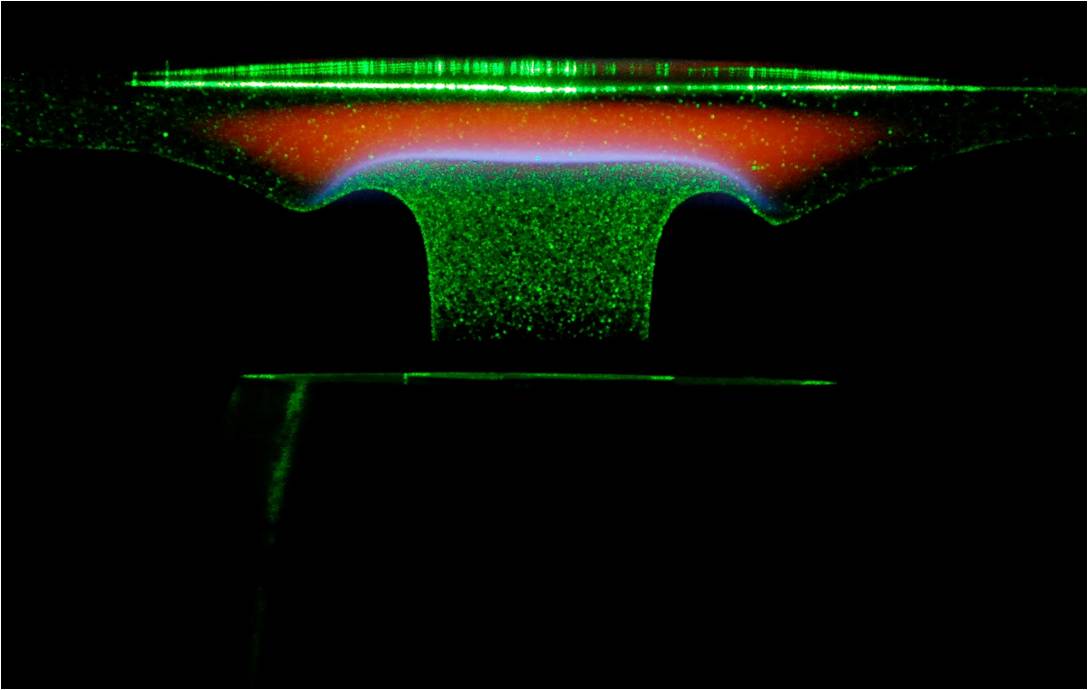|
Endovascular Coiling
Endovascular coiling is an Interventional neuroradiology, endovascular treatment for intracranial aneurysms and bleeding throughout the body. The procedure reduces blood circulation to an aneurysm or blood vessel through the implantation of detachable platinum wires, with the clinician inserting one or more into the blood vessel or aneurysm until it is determined that blood flow is no longer occurring within the space. It is one of two main treatments for cerebral aneurysms, the other being surgical clipping. Medical uses Endovascular coiling is typically used to treat Intracranial aneurysm, cerebral aneurysms. The main goal is prevention of rupture in unruptured aneurysms, and prevention of rebleeding in ruptured aneurysms by limiting blood circulation to the aneurysm space. Clinically, packing density is recommended to be 20-30% or more of the aneurysm's volume, typically requiring deployment of multiple wires. Higher volumes may be difficult due to the delicate nature of the a ... [...More Info...] [...Related Items...] OR: [Wikipedia] [Google] [Baidu] |
Interventional Neuroradiology
Interventional neuroradiology (INR) also known as neurointerventional surgery (NIS), endovascular therapy (EVT), endovascular neurosurgery, and interventional neurology is a medical subspecialty of neurosurgery, neuroradiology, intervention radiology and neurology specializing in minimally invasive image-based technologies and procedures used in diagnosis and treatment of diseases of the head, neck, and spine. History Diagnostic angiography Cerebral angiography was developed by Portuguese neurologist Egas Moniz at the University of Lisbon, in order to identify central nervous system diseases such as tumors or arteriovenous malformations. He performed the first brain angiography in Lisbon in 1927 by injecting an iodinated contrast medium into the internal carotid artery and using the X-rays discovered 30 years earlier by Roentgen in order to visualize the cerebral vessels. In pre-CT and pre-MRI, it was the only tool to observe the structures within the skull and was also use ... [...More Info...] [...Related Items...] OR: [Wikipedia] [Google] [Baidu] |
Interventional Radiology
Interventional radiology (IR) is a medical specialty that performs various minimally-invasive procedures using medical imaging guidance, such as Fluoroscopy, x-ray fluoroscopy, CT scan, computed tomography, magnetic resonance imaging, or ultrasound. IR performs both diagnostic and therapeutic procedures Minimally invasive procedure, through very small incisions or body orifices. Diagnostic IR procedures are those intended to help make a diagnosis or guide further medical treatment, and include image-guided biopsy of a tumor or injection of an Radiocontrast agent, imaging contrast agent into a hollow structure, such as a blood vessel or a Bile duct, duct. By contrast, Therapy, therapeutic IR procedures provide direct treatment—they include catheter-based medicine delivery, medical device placement (e.g., stents), and angioplasty of narrowed structures. The main benefits of IR techniques are that they can reach the deep structures of the body through a body orifice or tiny incisi ... [...More Info...] [...Related Items...] OR: [Wikipedia] [Google] [Baidu] |
Navier–Stokes Equations
The Navier–Stokes equations ( ) are partial differential equations which describe the motion of viscous fluid substances. They were named after French engineer and physicist Claude-Louis Navier and the Irish physicist and mathematician George Gabriel Stokes. They were developed over several decades of progressively building the theories, from 1822 (Navier) to 1842–1850 (Stokes). The Navier–Stokes equations mathematically express momentum balance for Newtonian fluids and make use of conservation of mass. They are sometimes accompanied by an equation of state relating pressure, temperature and density. They arise from applying Isaac Newton's second law to fluid motion, together with the assumption that the stress in the fluid is the sum of a diffusing viscous term (proportional to the gradient of velocity) and a pressure term—hence describing ''viscous flow''. The difference between them and the closely related Euler equations is that Navier–Stokes equat ... [...More Info...] [...Related Items...] OR: [Wikipedia] [Google] [Baidu] |
Computed Tomography Angiography
Computed tomography angiography (also called CT angiography or CTA) is a computed tomography technique used for angiography—the visualization of arteries and veins—throughout the human body. Using contrast injected into the blood vessels, images are created to look for blockages, aneurysms (dilations of walls), Dissection (medical), dissections (tearing of walls), and stenosis (narrowing of vessel). CTA can be used to visualize the vessels of the heart, the aorta and other large blood vessels, the lungs, the kidneys, the head and neck, and the arms and legs. CTA can also be used to localise arterial or venous bleed of the gastrointestinal system. Medical uses CTA can be used to examine blood vessels in many key areas of the body including the brain, kidneys, pelvis, and the lungs. Coronary CT angiography Coronary CT angiography (CCTA) is the use of CT angiography to assess the coronary artery, arteries of the heart. The patient receives an intravenous injection of radiocont ... [...More Info...] [...Related Items...] OR: [Wikipedia] [Google] [Baidu] |
In Silico
In biology and other experimental sciences, an ''in silico'' experiment is one performed on a computer or via computer simulation software. The phrase is pseudo-Latin for 'in silicon' (correct ), referring to silicon in computer chips. It was coined in 1987 as an allusion to the Latin phrases , , and , which are commonly used in biology (especially systems biology). The latter phrases refer, respectively, to experiments done in living organisms, outside living organisms, and where they are found in nature. History The earliest known use of the phrase was by Christopher Langton to describe artificial life, in the announcement of a workshop on that subject at the Center for Nonlinear Studies at the Los Alamos National Laboratory in 1987. The expression ''in silico'' was first used to characterize biological experiments carried out entirely in a computer in 1989, in the workshop "Cellular Automata: Theory and Applications" in Los Alamos, New Mexico, by Pedro Miramontes, a mathemat ... [...More Info...] [...Related Items...] OR: [Wikipedia] [Google] [Baidu] |
Finite Element Method
Finite element method (FEM) is a popular method for numerically solving differential equations arising in engineering and mathematical modeling. Typical problem areas of interest include the traditional fields of structural analysis, heat transfer, fluid flow, mass transport, and electromagnetic potential. Computers are usually used to perform the calculations required. With high-speed supercomputers, better solutions can be achieved and are often required to solve the largest and most complex problems. FEM is a general numerical method for solving partial differential equations in two- or three-space variables (i.e., some boundary value problems). There are also studies about using FEM to solve high-dimensional problems. To solve a problem, FEM subdivides a large system into smaller, simpler parts called finite elements. This is achieved by a particular space discretization in the space dimensions, which is implemented by the construction of a mesh of the object: the numer ... [...More Info...] [...Related Items...] OR: [Wikipedia] [Google] [Baidu] |
Computational Fluid Dynamics
Computational fluid dynamics (CFD) is a branch of fluid mechanics that uses numerical analysis and data structures to analyze and solve problems that involve fluid dynamics, fluid flows. Computers are used to perform the calculations required to simulate the free-stream flow of the fluid, and the interaction of the fluid (liquids and gases) with surfaces defined by Boundary value problem#Boundary value conditions, boundary conditions. With high-speed supercomputers, better solutions can be achieved, and are often required to solve the largest and most complex problems. Ongoing research yields software that improves the accuracy and speed of complex simulation scenarios such as transonic or turbulence, turbulent flows. Initial validation of such software is typically performed using experimental apparatus such as wind tunnels. In addition, previously performed Closed-form solution, analytical or Empirical research, empirical analysis of a particular problem can be used for compa ... [...More Info...] [...Related Items...] OR: [Wikipedia] [Google] [Baidu] |
Particle Image Velocimetry
Particle image velocimetry (PIV) is an optical method of flow visualization used in education and research. It is used to obtain instantaneous velocity measurements and related properties in fluids. The fluid is seeded with tracer particles which, for sufficiently small particles, are assumed to faithfully follow the flow dynamics (the degree to which the particles faithfully follow the flow is represented by the Stokes number). The fluid with entrained particles is illuminated so that particles are visible. The motion of the seeding particles is used to calculate speed and direction (the velocity field) of the flow being studied. Other techniques used to measure flows are laser Doppler velocimetry and hot-wire anemometry. The main difference between PIV and those techniques is that PIV produces two-dimensional or even three-dimensional vector fields, while the other techniques measure the velocity at a point. During PIV, the particle concentration is such that it is possibl ... [...More Info...] [...Related Items...] OR: [Wikipedia] [Google] [Baidu] |
Circle Of Willis From CT Angio
A circle is a shape consisting of all points in a plane that are at a given distance from a given point, the centre. The distance between any point of the circle and the centre is called the radius. The length of a line segment connecting two points on the circle and passing through the centre is called the diameter. A circle bounds a region of the plane called a disc. The circle has been known since before the beginning of recorded history. Natural circles are common, such as the full moon or a slice of round fruit. The circle is the basis for the wheel, which, with related inventions such as gears, makes much of modern machinery possible. In mathematics, the study of the circle has helped inspire the development of geometry, astronomy and calculus. Terminology * Annulus: a ring-shaped object, the region bounded by two concentric circles. * Arc: any connected part of a circle. Specifying two end points of an arc and a centre allows for two arcs that together make up a ... [...More Info...] [...Related Items...] OR: [Wikipedia] [Google] [Baidu] |
Electrolysis
In chemistry and manufacturing, electrolysis is a technique that uses Direct current, direct electric current (DC) to drive an otherwise non-spontaneous chemical reaction. Electrolysis is commercially important as a stage in the separation of chemical element, elements from naturally occurring sources such as ores using an electrolytic cell. The voltage that is needed for electrolysis to occur is called the decomposition potential. The word "lysis" means to separate or break, so in terms, electrolysis would mean "breakdown via electricity." Etymology The word "electrolysis" was introduced by Michael Faraday in 1834, using the Greek language, Greek words "amber", which since the 17th century was associated with electrical phenomena, and ' meaning "dissolution". Nevertheless, electrolysis, as a tool to study chemical reactions and obtain pure chemical element, elements, precedes the coinage of the term and formal description by Faraday. History In the early nineteenth century, ... [...More Info...] [...Related Items...] OR: [Wikipedia] [Google] [Baidu] |
Parent Artery
A parent artery is a medical term to describe an artery from which another artery originates. It can also refer to the artery in which an aneurysm An aneurysm is an outward :wikt:bulge, bulging, likened to a bubble or balloon, caused by a localized, abnormal, weak spot on a blood vessel wall. Aneurysms may be a result of a hereditary condition or an acquired disease. Aneurysms can also b ... has occurred. References {{Reflist Angiology ... [...More Info...] [...Related Items...] OR: [Wikipedia] [Google] [Baidu] |
Balloon Catheter
A balloon catheter is a type of "soft" catheter with an inflatable "balloon" at its tip which is used during a catheterization procedure to enlarge a narrow opening or passage within the Human body, body. The deflated balloon catheter is positioned, then inflated to perform the necessary procedure, and deflated again in order to be removed. Some common uses include: *angioplasty or balloon septostomy, via cardiac catheterization (heart cath) *tuboplasty via uterus, uterine catheterization *pyeloplasty using a detachable inflatable balloon stent positioned via a cystoscopy, cystoscopic transvesicular approach. Angioplasty balloon catheters Balloon catheters used in angioplasty are either of Over-the-Wire (OTW) or Rapid Exchange (Rx) design. Rx catheters nowadays are about 90% of the Coronary Intervention market. While OTW Catheters may still be useful in highly tortuous vascular pathways, they sacrifice deflation time and pushability. When a balloon catheter is used to compress ... [...More Info...] [...Related Items...] OR: [Wikipedia] [Google] [Baidu] |








